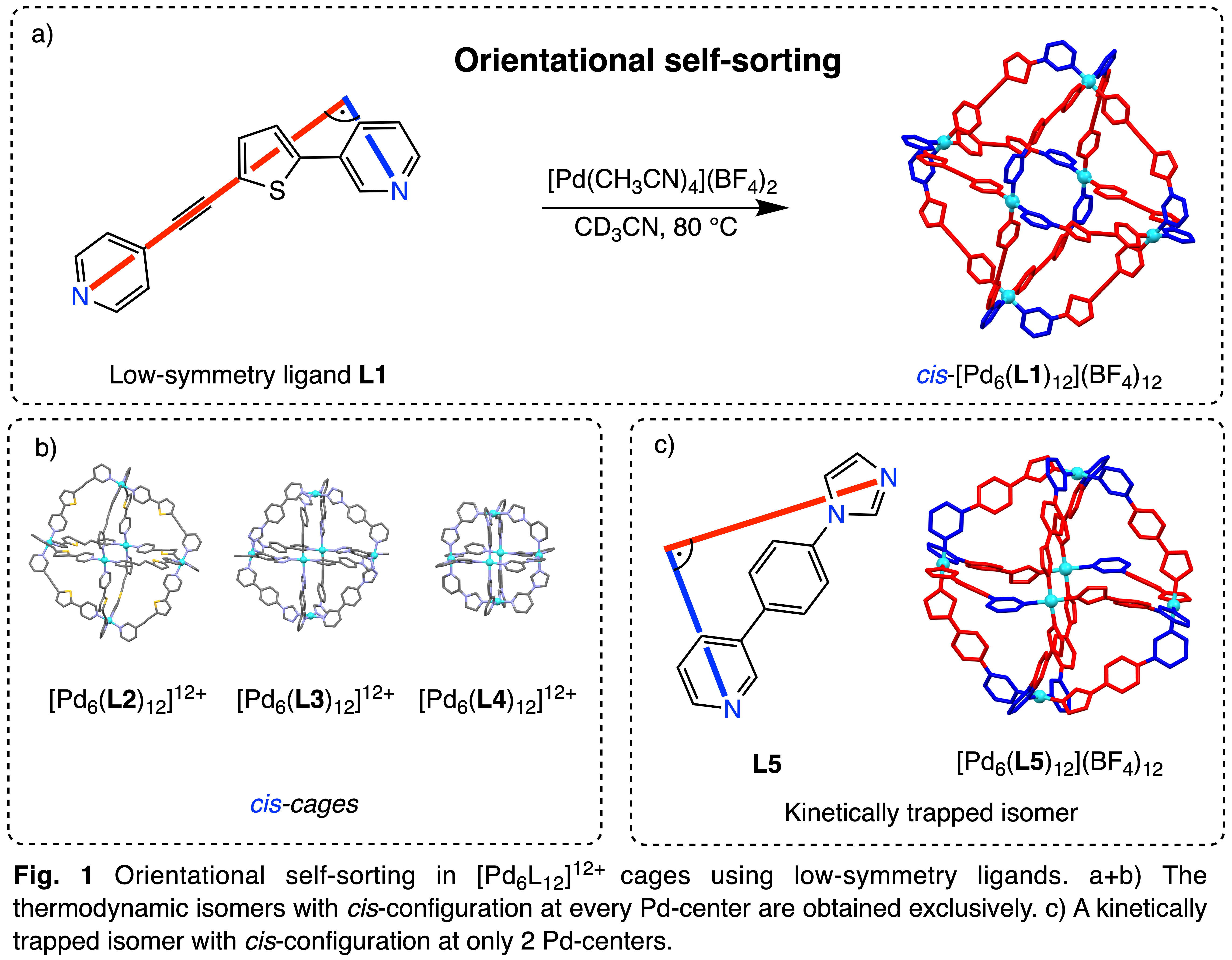Orientational self-sorting in octahedral palladium cages: scope and limitations of the cis-rule
Palladium-based metal-organic cages (MOCs) have been widely studied and have applications in medicinal chemistry as well as in catalysis. The understanding of their self-assembly is therefore of great importance. Ditopic N-donor ligands L and Pd(II) precursors form a variety of MOCs of the general formula [PdnL2n]2n+ in which the bend angle of L, for the most part, dictates the geometry of the cage. Using various low-symmetry heteroditopic ligands L with a bend angle of 90°, hexanuclear [Pd6L12]12+ metal-organic cages (MOCs) were synthesized with [Pd(CH3CN)4(BF4)12] in acetonitrile. Due to the low symmetry of the ligands many isomers can potentially be formed. The obtained structures provide additional evidence for orientational self-sorting1,2: Out of 112 possible isomers for [Pd6L12]12+, we show the one isomer with cis-configuration at all Pd-centers is thermodynamically favored (Fig. 1a and 1b). Various characterization methods including 1H NMR, 13C NMR, COSY, NOESY, DOSY and single crystal XRD structure elucidation confirm the formation of a single isomer. Using ligands with different coordination vector ratios and donor groups (pyridyl-, triazolyl- and imidazolyl-donor) we discuss the scope and limitations of the aforementioned selectivity. A kinetically trapped product was obtained from imidazolyl-ligand L5 (Fig. 1c). Furthermore, we provide a geometrical explanation using a coordination vector model for the experimentally observed cis-isomers.

[1] Ru-jin Li, Andrew Tarzia, Victor Posligua, Kim E. Jelfs, Nicolas Sanchez, Adam Marcus, Ananya Baksi, Guido H. Clever, Farzaneh Fadaei-Tirani and Kay Severin, Chem. Sci., 2022, 13, 11912-11917.
[2] Ru-jin Li, Adam Marcus, Farzaneh Fadaei-Tirani and Kay Severin, Chem. Commun., 2021, 57, 10023-10026.